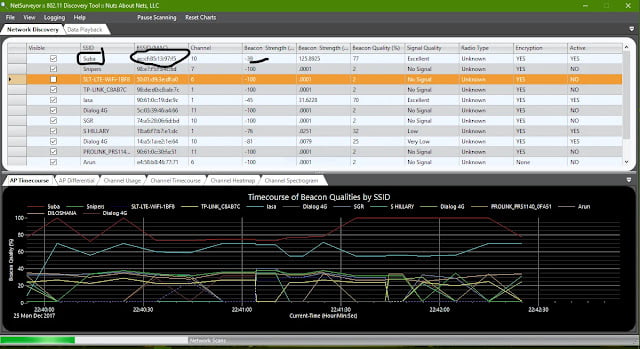Privileged Access Management (PAM) is a crucial aspect of cybersecurity that focuses on safeguarding and controlling access to an organization’s most sensitive information and resources. At its core, PAM is all about managing and monitoring the access rights of privileged users—those individuals within an organization who have elevated permissions to critical systems and data. These users typically include IT administrators, executives, and other personnel whose roles require them to have higher levels of access than the average user.
The importance of PAM cannot be overstated, especially in today’s digital age where cyber threats are becoming more sophisticated. By tightly controlling privileged access, organizations can significantly reduce the risk of data breaches, insider threats, and other security incidents. This is achieved through various means, including the use of specialized software tools that enforce strict access controls, monitor privileged user activities in real time, and record sessions for audit purposes.
A well-implemented PAM strategy involves several key components. First, it requires the identification and categorization of all privileged accounts within the organization. Once identified, these accounts are subject to stringent access controls, ensuring that only authorized users can gain access, and only when necessary. This often involves mechanisms like multi-factor authentication, least privilege enforcement, and just-in-time access, which provides temporary privileges for specific tasks.
Moreover, PAM solutions offer comprehensive monitoring and logging capabilities, allowing organizations to detect suspicious activities and respond swiftly to potential threats. This includes the ability to track exactly who accessed what information, when, and under what circumstances, providing a detailed audit trail that is invaluable for compliance and forensic analysis.
In summary, Privileged Access Management is an essential security practice that helps protect an organization’s most valuable assets from unauthorized access and potential misuse. By implementing a robust PAM strategy, organizations can enhance their security posture, comply with regulatory requirements, and minimize the risk of security breaches.
1. CyberArk
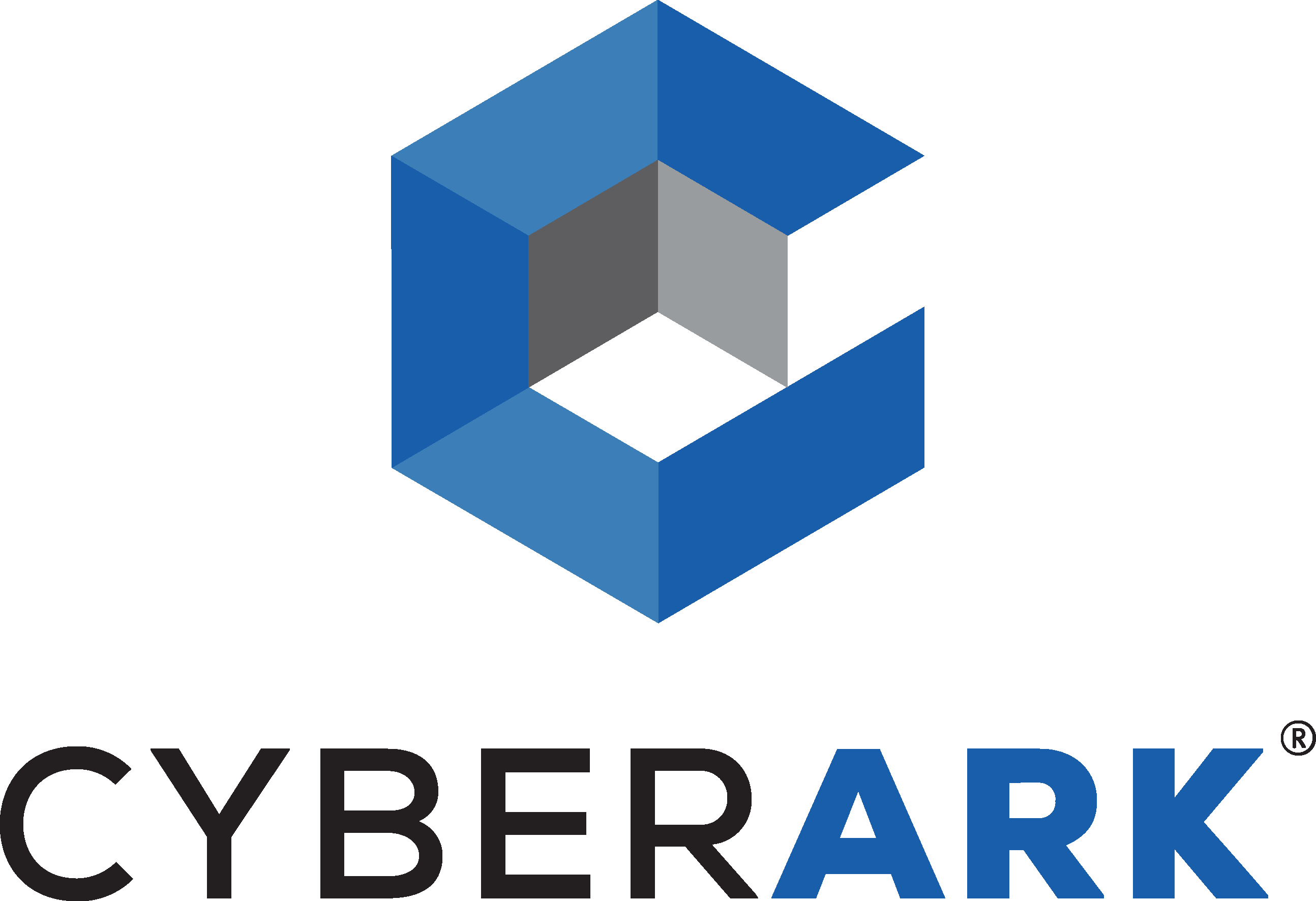
Introduction:
A leader in the PAM market, CyberArk offers comprehensive PAM solutions emphasizing security and innovation.
CyberArk Privileged Access Management (PAM) is a comprehensive security solution designed to protect, manage, and monitor privileged accounts and credentials across an organization’s IT environment. In today’s digital age, privileged accounts, such as administrator accounts, are essential for managing systems, applications, and critical infrastructure. However, these accounts also represent significant security risks if they fall into the wrong hands, making their protection a top priority for organizations aiming to safeguard their assets and data from cyber threats.
Privileged Access Management focuses on securing access to critical systems and data by managing and monitoring the use of privileged accounts. It is an essential component of an organization’s cybersecurity strategy, helping to mitigate the risks of data breaches, insider threats, and external attacks. PAM solutions provide the tools needed to control access to privileged accounts, enforce security policies, and log all privileged activities for audit and compliance purposes.
Key Features of CyberArk PAM
Centralized Management: CyberArk PAM offers a centralized platform for managing privileged credentials and access policies. This centralization simplifies the administration of privileged accounts, making it easier for security teams to enforce policies and monitor access across various systems and environments.
Secure Credential Storage: The solution uses a digital vault to securely store credentials. This vault is designed to prevent unauthorized access and uses multiple layers of security, including encryption, to protect sensitive information.
Session Management and Monitoring: CyberArk PAM provides tools for monitoring and managing privileged sessions in real time. This includes the ability to record sessions, which can be invaluable for audits and investigations, as well as for detecting and responding to suspicious activities.
Least Privilege Enforcement: By enforcing the principle of least privilege, CyberArk PAM ensures that users only have the access necessary to perform their job functions. This minimizes the potential damage that can be caused by compromised credentials or insider threats.
Access Control and Workflow Automation: The platform offers robust access control mechanisms, including multi-factor authentication and role-based access controls. Additionally, it automates workflows for requesting, approving, and revoking privileged access, streamlining the management of privileged accounts.
Threat Detection and Response: CyberArk PAM includes advanced threat detection capabilities, leveraging machine learning and user behavior analytics to identify anomalous activities that could indicate a security threat. In case of detected threats, it provides tools for rapid response and mitigation.
CyberArk PAM represents a critical tool in the arsenal of organizations looking to enhance their cybersecurity posture. By providing a robust framework for managing and securing privileged accounts, CyberArk PAM helps protect against some of the most significant security threats facing organizations today. Its comprehensive approach to privileged access management, combining advanced security features with ease of use and automation, makes it an essential component of modern cybersecurity strategies.
Pros of CyberArk PAM:
- High scalability, extensive integrations, and strong market presence.
Cons of CyberArk:
- High cost and complexity in management and upgrades.
2. Delinea
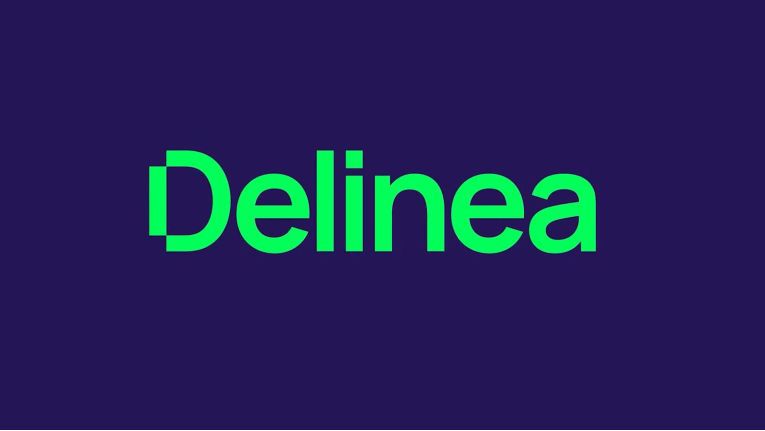
Introduction:
Known for its integrated PAM platform offering versatile solutions.
Delinea Privileged Access Management (PAM) represents a comprehensive suite designed to secure, manage, and monitor privileged accounts and access across an organization’s IT environment. As cyber threats evolve and become more sophisticated, the need for robust security measures to protect sensitive information and critical systems has never been more paramount. Delinea PAM steps in as a solution to mitigate the risks associated with privileged credentials and access, which, if compromised, could lead to significant security breaches.
Core Features and Benefits:
Centralized Management of Privileged Accounts: Delinea PAM provides a centralized platform for managing privileged credentials. This means that all sensitive access rights are stored, managed, and monitored from a single, secure location, reducing the risk of unauthorized access and making it easier for IT administrators to oversee privileged accounts.
Session Monitoring and Recording: One of the key features of Delinea PAM is its ability to monitor and record sessions initiated by privileged users. This not only acts as a deterrent against misuse of privileged access but also provides valuable audit trails that can be used for compliance purposes and forensic analysis in the event of a security incident.
Least Privilege Enforcement: Delinea PAM helps organizations implement the principle of least privilege, ensuring users have only the access rights necessary to perform their job functions. This minimizes the attack surface and reduces the potential impact of a compromised account.
Multi-Factor Authentication (MFA) and Risk-Based Access Controls: To further enhance security, Delinea PAM integrates multi-factor authentication and risk-based access controls. These features require users to authenticate their identities through multiple verification methods and allow access based on the risk profile of the request, adding an additional layer of security.
Scalability and Integration: Delinea PAM is designed to scale with an organization’s growth, supporting a wide range of devices and platforms. It can integrate with existing IT infrastructure, including identity management systems, making it a versatile tool for enhancing security posture.
User-friendly Interface: Despite its robust security features, Delinea PAM boasts a user-friendly interface that simplifies the management of privileged accounts for IT administrators, ensuring that enhanced security does not come at the cost of usability.
In today’s digital age, where cyber threats are increasingly sophisticated and damaging, having control over privileged access is critical. Privileged accounts are often targeted by attackers due to the high level of access they provide. Delinea PAM addresses this challenge head-on, offering a solution that not only protects privileged accounts but also improves compliance and operational efficiency.
Organizations across various industries can benefit from Delinea PAM, especially those dealing with large amounts of sensitive data and those subject to strict regulatory requirements. By implementing Delinea PAM, organizations can significantly reduce their cybersecurity risks and ensure that they have the necessary controls in place to manage and monitor privileged access effectively.
In conclusion, Delinea Privileged Access Management stands out as a critical component of an organization’s cybersecurity strategy. Its comprehensive approach to managing, monitoring, and controlling privileged access helps safeguard against the potentially catastrophic consequences of a security breach. With its emphasis on ease of use, scalability, and integration, Delinea PAM not only enhances security but also supports business continuity and compliance efforts. As cyber threats continue to evolve, tools like Delinea PAM will remain essential for organizations looking to protect their critical assets and maintain trust with their customers and stakeholders.
Pros of Delinea PAM:
- Ease of use, strong UNIX/Linux PEDM, good customer experience.
Cons of Delinea PAM:
- Lags in RDP session management capabilities and increased focus on SaaS may limit on-premises options.
3. BeyondTrust
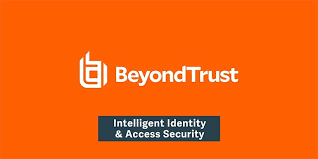
Introduction:
Offers robust PAM solutions focused on preventing data breaches.
BeyondTrust Privileged Access Management (PAM) is a comprehensive solution designed to secure, manage, and monitor privileged accounts and access across an organization’s IT environment. As cybersecurity threats have evolved and become more sophisticated, managing privileged access has become a critical aspect of an organization’s security strategy.
Privileged accounts, such as those used by system administrators, IT professionals, and applications, have elevated permissions that allow access to sensitive data and systems. If these accounts are compromised, the impact can be significant, leading to data breaches, system disruptions, and other security incidents. BeyondTrust’s PAM solution addresses these challenges by providing a robust set of tools and capabilities.
Key Features and Capabilities
Password Safe, Privileged Remote Access, and AD bridging tools.
Privileged Password Management: BeyondTrust PAM secures and automates the management of passwords for privileged accounts. This includes automatically changing passwords after use, enforcing password policies, and providing secure storage for credentials.
Session Management and Monitoring: The solution offers capabilities to monitor, record, and manage sessions initiated by privileged users. This ensures that all activities performed during these sessions are auditable and traceable, enhancing security and compliance.
Least Privilege Enforcement: BeyondTrust PAM helps organizations implement the principle of least privilege, ensuring users have only the access necessary to perform their job functions. This minimizes the risk of unauthorized access or actions within the IT environment.
Secure Remote Access: The solution provides secure, controlled access to internal systems for remote employees, third-party vendors, and contractors. This includes features like VPN-less access and multi-factor authentication (MFA) to enhance security.
Endpoint Privilege Management: BeyondTrust PAM extends its capabilities to endpoints, allowing organizations to remove local admin rights on Windows, Mac, Unix, and Linux systems while still enabling users to run necessary applications and tasks.
Integration and Automation: BeyondTrust’s PAM solution integrates with a wide range of IT systems, including SIEM, ITSM, and identity management solutions. This allows for automated workflows and enhances the overall security posture by providing a unified view of privileged access.
BeyondTrust PAM can be deployed in various environments, including on-premises, in the cloud, or in hybrid scenarios. Its flexible architecture allows organizations to scale the solution according to their needs. The user interface is designed to be intuitive, making it easier for IT teams to manage privileged access effectively.
Overall, BeyondTrust Privileged Access Management is a powerful tool for organizations looking to strengthen their cybersecurity defenses by securing privileged access. Its comprehensive features and capabilities make it a key component in protecting against the risks associated with privileged accounts and access in today’s complex IT landscapes.
Pros Of BeyondTrust PAM:
- Strong in account discovery and session management, ease of use.
Cons of BeyondTrust PAM
- Higher pricing, less innovation in secrets management.
4. ARCON
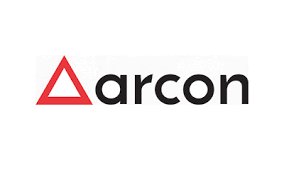
Introduction:
A challenger in the PAM space with a comprehensive suite.
ARCON Privileged Access Management (PAM) is a cutting-edge security solution designed to safeguard an organization’s critical assets by monitoring, controlling, and managing access to privileged accounts. Privileged accounts, such as system administrators, network administrators, and other high-level IT personnel, have elevated permissions that allow them to make significant changes to the IT environment, including the network, hardware, and software systems. As these accounts can perform actions that have wide-ranging implications for an organization’s security, managing and securing their access is paramount. This is where ARCON PAM comes into play.
Key Features of ARCON PAM:
Privileged account/session management, elevation/delegation, and secrets management.
Secure Access Control: ARCON PAM ensures that only authorized users have access to privileged accounts. It employs robust authentication methods, including multi-factor authentication (MFA), to verify the identity of users before granting access, thereby reducing the risk of unauthorized access.
Session Management: The solution offers detailed oversight of privileged sessions, allowing administrators to monitor live sessions in real time. It can record sessions, which aids in auditing and compliance efforts, providing a trail of activities for forensic analysis in the event of a security incident.
Least Privilege Enforcement: ARCON PAM adheres to the principle of least privilege, ensuring that users have only the access necessary to perform their job functions. This minimizes the risk of insider threats and reduces the potential damage from compromised accounts.
Password Vaulting: A secure repository for storing and managing privileged credentials ensures that passwords are encrypted and accessible only to authorized users. This feature also supports automatic password rotation and complex password generation to further enhance security.
Compliance and Reporting: The platform comes equipped with comprehensive reporting tools that help organizations meet regulatory requirements. By providing detailed logs and reports on privileged account usage, organizations can demonstrate compliance with various standards and regulations.
High Availability and Scalability: ARCON PAM is designed to support large-scale deployments, offering high availability configurations to ensure continuous operation. Its scalable architecture allows organizations to expand their privileged access management as their needs grow.
ARCON PAM is suited for organizations of all sizes across various industries, especially those that handle sensitive data or operate in regulated sectors such as finance, healthcare, government, and IT services. Its flexible and scalable architecture makes it a viable option for businesses looking to strengthen their cybersecurity posture by securing their privileged accounts.
In conclusion, ARCON PAM represents a comprehensive solution for managing and securing privileged access within an organization. By mitigating the risks associated with privileged accounts, ARCON PAM plays a crucial role in an organization’s overall security strategy, protecting against both external threats and insider risks. As cybersecurity threats continue to evolve, having a robust privileged access management solution like ARCON PAM is indispensable for maintaining the integrity and security of critical IT assets.
Pros of ARCON PAM:
- Competitive pricing, strong product capabilities, and excellent customer support.
Cons ARCON PAM:
- User interface challenges, limited marketing, and geographic reach.
5. One Identity
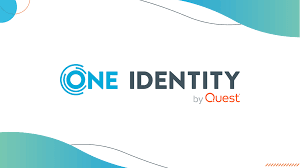
Introduction:
Offers a comprehensive set of PAM solutions designed for flexibility.
One Identity Privileged Access Management (PAM) solutions offer a comprehensive approach to securing, managing, and monitoring privileged accounts and access across an organization’s IT environment. With the evolving landscape of cybersecurity threats, where privileged accounts are often the primary target for attackers, One Identity PAM provides a robust layer of defense, ensuring that these high-value accounts are protected from unauthorized access and misuse.
Features:
Safeguard for PASM and Privilege Manager for PEDM.
Privileged Account Discovery and Management
One Identity PAM enables organizations to discover all privileged accounts across their IT infrastructure, including on-premises, cloud environments, and various endpoints. Once identified, it provides the tools to manage these accounts effectively, including automated password rotation, secure storage of credentials, and the enforcement of password policies to ensure compliance with industry standards and regulations.
Session Management and Monitoring
To mitigate the risks associated with privileged access, One Identity PAM offers session management capabilities. This includes the ability to monitor, record, and audit all privileged sessions in real time, providing visibility into the actions taken by privileged users. This feature is crucial for detecting suspicious activities, ensuring accountability, and meeting compliance requirements.
Least Privilege Enforcement
One Identity PAM promotes the principle of least privilege by ensuring that users have only the access rights necessary for their roles and responsibilities. It allows for the granular control of privileges on servers, network devices, and applications, reducing the attack surface by limiting the scope of potential damage from compromised accounts.
Secure Access and Workflow Automation
The solution streamlines the process of granting privileged access through secure workflows. Access requests can be automatically approved based on policies or routed for manual approval, ensuring that privileged access is granted quickly when needed but remains tightly controlled. This process includes features like multi-factor authentication (MFA) and just-in-time (JIT) access to further enhance security.
Training and awareness are also crucial components of a successful PAM strategy. Ensuring that all stakeholders understand the importance of privileged access security and how to use the PAM tools effectively is essential for maintaining a strong security posture.
In the face of increasingly sophisticated cyber threats, One Identity Privileged Access Management stands out as an essential solution for organizations looking to protect their critical assets. By offering comprehensive tools for managing and monitoring privileged accounts, enforcing security policies, and ensuring compliance, One Identity PAM helps organizations build a more secure and resilient IT environment.
Pros of One Identity PAM:
- High scores in session management, ease of deployment, and good customer experience.
Cons One Identity PAM:
- Growth concerns, focus on catch-up rather than core PAM improvements.
6. HashiCorp

Introduction:
A niche player offering innovative secrets management and PAM solutions.
HashiCorp PAM (Privileged Access Management) represents a crucial component in the modern security infrastructure, aimed at safeguarding privileged access to critical systems and resources within an organization. Given the rising complexity and distributed nature of IT environments, especially with the adoption of cloud technologies, managing privileged access has become more challenging yet increasingly vital.
HashiCorp, a well-recognized name in the infrastructure automation and security field, has extended its suite of solutions to address this critical area. Although HashiCorp is renowned for products like Terraform, Vault, Consul, and Nomad, which help in automating infrastructure provisioning, securing secrets, service networking, and orchestrating workloads, respectively, PAM is a natural extension of its portfolio, especially when considering the security and compliance aspects of privileged access.
Privileged Access Management (PAM) focuses on controlling, monitoring, and securing access to critical systems and resources by privileged users or systems. These privileged entities often have elevated rights that allow them to perform sensitive operations, which, if misused or compromised, can lead to significant security breaches.
While HashiCorp doesn’t offer a standalone product explicitly named “PAM,” its Vault product often plays a central role in a comprehensive PAM strategy. HashiCorp Vault is an identity-based secrets and encryption management system that enables tight control over access to tokens, passwords, certificates, API keys, and other secrets.
Key Features Relevant to PAM:
Vault for secrets management and Boundary for PASM.
Secrets Management: Vault secures, stores, and tightly controls access to tokens, passwords, certificates, and encryption keys for protecting secrets, and other sensitive data.
Dynamic Secrets: Vault can generate dynamic, on-demand access credentials to various systems, ensuring that credentials are only available for a short duration and reducing the risk of credential leakage or misuse.
Identity & Access Management (IAM): By integrating with various IAM solutions, Vault can authenticate and authorize privileged users based on their identity, ensuring that only authorized individuals can access specific resources.
Audit Logging: Vault provides comprehensive audit logs, offering visibility into who accessed what secrets, and at what time, which is critical for tracking privileged access and detecting anomalous behaviors.
HashiCorp’s ecosystem, with Vault at its core, presents a modern approach to PAM that aligns with cloud-native and DevOps practices. This approach is particularly beneficial for organizations that have embraced cloud technologies and need to manage privileged access across hybrid and multi-cloud environments. It emphasizes automation, scalability, and tight integration with existing tools and workflows, which are essential characteristics in dynamic IT landscapes.
Furthermore, HashiCorp’s focus on identity-based security, along with its robust policy engine, enables fine-grained control over privileged access. This ensures that organizations can enforce the principle of least privilege effectively, minimizing the potential attack surface and enhancing overall security posture.
In the realm of Privileged Access Management, HashiCorp’s solutions, particularly Vault, offer a powerful and flexible approach to securing privileged access in modern IT environments. By leveraging dynamic secrets, robust identity and access management, and comprehensive audit trails, organizations can protect their critical systems and data more effectively. As IT environments continue to evolve, adopting solutions that are built for scalability, automation, and integration will be key to maintaining robust security postures, making HashiCorp’s offerings highly relevant in the PAM space
Pros of HashiCorp:
- Strong in secrets management, good market presence, and customer appreciation for the ease of integration.
Cons of HashiCorp:
- Newer to PAM with gaps in features, high cost, and less flexibility in pricing.
7. ManageEngine
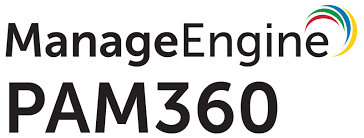
Introduction:
Provides comprehensive PAM solutions with a focus on affordability.
ManageEngine PAM360 is a comprehensive Privileged Access Management (PAM) solution designed to help organizations secure, control, and audit their entire privileged access landscape. With cyber threats becoming more sophisticated and insider threats posing a significant risk, PAM360 offers a robust framework to mitigate risks associated with privileged access. It is built to cater to the needs of large enterprises as well as mid-sized organizations, offering scalability, ease of deployment, and a user-friendly interface. Here’s an in-depth look at ManageEngine PAM360, highlighting its key features, benefits, and how it stands out in the crowded PAM market.
Core Features of ManageEngine PAM360
PAM360 for integrated privileged account and session management.
Centralized Privileged Account Management: PAM360 allows organizations to store and manage all privileged accounts in a secure, centralized vault. This ensures that critical credentials are safeguarded against unauthorized access and misuse.
Automated Credential Rotation: The system automatically updates credentials and passwords at configurable intervals, reducing the risk of stale or compromised credentials being exploited by attackers.
Session Monitoring and Recording: To ensure accountability and compliance, PAM360 monitors and records all privileged sessions. This feature is invaluable for audits and investigations, providing clear visibility into who did what, when, and from where.
Multi-factor Authentication (MFA) for Privileged Access: Adding an extra layer of security, PAM360 integrates MFA to ensure that access to privileged accounts is securely validated, reducing the likelihood of unauthorized access.
Privileged User Behavior Analytics (PUBA): By analyzing user behavior, PAM360 can identify and alert on anomalies that may indicate a security threat or misuse of privileged access, allowing for rapid response to potential security incidents.
Secure Remote Access: PAM360 facilitates secure remote access to critical systems without exposing credentials to end-users, essential for maintaining security in increasingly remote and distributed work environments.
Compliance and Audit Reports: The solution provides comprehensive reports tailored to meet various compliance standards (such as SOX, HIPAA, PCI-DSS), making it easier for organizations to adhere to regulatory requirements and pass audits.
Enhanced Security: By securing privileged access, PAM360 significantly reduces the risk of data breaches and insider threats, protecting sensitive information and critical infrastructure.
Improved Compliance Posture: The solution simplifies compliance with industry regulations through detailed reporting and audit trails, helping organizations meet stringent compliance requirements.
Operational Efficiency: Automated credential management and streamlined access procedures increase operational efficiency, reducing the time and effort required to manage privileged accounts.
Scalability: Designed to meet the needs of both large and small organizations, PAM360 scales with your business, ensuring that your privileged access management capabilities grow as your organization expands.
What sets ManageEngine PAM360 apart from other PAM solutions is its comprehensive approach to privileged access management, combining advanced security features with user-friendly operation. Its ability to integrate seamlessly with a wide range of IT systems and applications means that organizations can implement PAM360 without disrupting existing workflows. Additionally, ManageEngine’s commitment to customer support and continuous improvement ensures that PAM360 remains at the forefront of PAM technology, offering new features and enhancements that respond to the evolving cybersecurity landscape.
In conclusion, ManageEngine PAM360 offers a robust, scalable, and comprehensive solution for managing and securing privileged access across an organization. Its blend of advanced security features, ease of use, and adaptability makes it a valuable tool for any organization looking to strengthen its cybersecurity posture and ensure compliance in a challenging digital environment.
Pros of ManageEngine PAM360:
- Extensive discovery capabilities, competitive pricing, and ease of maintenance.
Cons of ManageEngine PAM360:
- Limited session management capabilities need enhancements in innovation and market understanding.
8. Broadcom (Symantec)
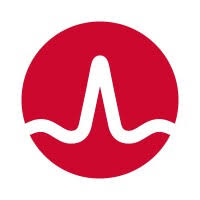
Introduction:
Offers PAM solutions with strong PEDM capabilities and scalability.
Broadcom’s Privileged Access Management (PAM), previously known as Symantec PAM, is a comprehensive solution designed to secure and manage privileged access to critical IT resources across an organization’s environment. The main goal of Broadcom PAM is to protect privileged credentials, control privileged user access, enforce security policies proactively, and monitor and audit privileged user activity across a hybrid environment. This environment can include both cloud and on-premises infrastructures, extending from traditional data centers to modern cloud platforms and virtualized networks.
Key features of Broadcom PAM include:
Symantec Privileged Access Management for PASM and Server Control for PEDM.
Privileged Credential Vault: It stores sensitive administrative credentials in an encrypted database, ensuring that access to these critical credentials is secured and managed effectively.
Secrets Management: Broadcom PAM eliminates the risk of hard-coded passwords in applications, configuration files, and scripts by providing a secure mechanism for managing these secrets, which is crucial for secure communications and automation within IT environments.
Unified Cross-Platform Protection: The solution offers a unified approach to managing and protecting privileged account credentials across all IT resources, whether they are located in the cloud, on mainframes, or anywhere in between.
Automatic Discovery and Protection: Broadcom PAM can automatically discover and protect virtual and cloud-based resources, adapting to changes in the IT environment without requiring manual intervention.
Tamper-Proof Audit Data and Forensic Evidence: The solution provides secure and tamper-proof logging and auditing capabilities, enabling organizations to generate forensic evidence of all privileged user activities. This is essential for compliance and investigative purposes.
Broadcom PAM integrates with existing identity and access management infrastructure, such as Active Directory and LDAP-compliant directories, as well as authentication systems like RADIUS. This allows organizations to leverage their existing investments in identity management and enhance their security posture without significant additional overhead.
By focusing on the protection and management of privileged access, Broadcom PAM plays a critical role in preventing credential-related breaches and ensuring compliance with industry standards such as PCI-DSS. It is designed to help organizations adopt a Zero Trust architecture, which is based on the principle of not automatically trusting anything inside or outside the network perimeter and verifying everything trying to connect to its resources.
In summary, Broadcom (Symantec) PAM is a robust solution that addresses the complex challenges of privileged access management in today’s diverse and dynamic IT environments. Its comprehensive capabilities make it an essential tool for organizations looking to strengthen their security posture, comply with regulatory requirements, and protect their critical IT assets from unauthorized access and potential breaches
Pros of Broadcom (Symantec) PAM:
- Competitive pricing, strong PEDM product, good industry and geographic strategy.
Cons of Broadcom (Symantec) PAM:
- Reliance on custom connectors, lower customer support satisfaction.
9. Saviynt

Introduction:
Specializes in cloud-native PAM solutions with a focus on IGA integration.
Saviynt Privileged Access Management (PAM) represents a cutting-edge approach to securing privileged access in the digital era, distinguishing itself through several key features and benefits that cater to modern cybersecurity needs. Saviynt’s solution is built on a cloud-native platform, designed to manage and secure privileged access across an organization’s entire application ecosystem, including cloud, hybrid, and on-premises environments.
Key Features of Saviynt PAM:
Cloud Privileged Access Management for SaaS environments.
Cloud-Native Deployment: Saviynt offers a rapid deployment model across complex use cases without significant upfront costs, leveraging an agentless, SaaS-based solution to simplify management and ensure high availability with built-in compliance to standards such as FedRAMP, SOC 1 & 2, and ISO 27017.
Zero Trust Security Model: Implements Zero-Trust principles, reducing credential leaks and risk exposure by enabling time-bound privileged sessions and implementing least privileged access with zero standing accounts and privileges.
Unified Identity and Access Management: Combines Privileged Access Management (PAM) with Identity Governance and Administration (IGA) to deliver a unified identity-driven experience. This integration helps in managing both standard and privileged access consistently, enhancing security insights by facilitating risk data exchange with third-party solutions.
Advanced Analytics and Risk Management: Offers continuous monitoring for misconfigurations and identity risks, with built-in cloud infrastructure entitlements management to identify and remediate excessive or unused access, improving cloud security posture.
Distinctions from Traditional PAM Solutions:
Saviynt’s PAM solution addresses the limitations of traditional PAM systems by offering:
A Comprehensive Cloud PAM Solution: Unlike traditional PAM solutions that focus on vaulting and admin credential rotation, Saviynt’s Cloud PAM provides a more holistic approach. It encompasses just-in-time access, role-based elevation for cloud platforms, databases, and applications, along with cloud security entitlements management, all within a single platform.
Innovative Approach to Privileged Access: Saviynt reimagines PAM for the cloud era, offering identity-led, risk-aware, and scalable control over privileged and sensitive access, thus supporting digital transformation initiatives.
Integration with Modern IT Ecosystems: By integrating IGA and PAM, Saviynt closes security gaps between standard and privileged access, providing comprehensive visibility and control over all identities within the organization’s IT environment.
Saviynt has been recognized as an innovation leader by analysts such as KuppingerCole, highlighting its advancements in the PAM-as-a-Service platform. The solution’s efficacy is further evidenced by its adoption by large organizations, including Equifax and GFS, who have leveraged Saviynt’s cloud-native PAM platform to achieve significant cybersecurity milestones and digital transformation goals.
In summary, Saviynt PAM emerges as a leader in privileged access management by offering a cloud-native, integrated, and comprehensive solution designed for the modern IT landscape, addressing both current and emerging cybersecurity challenges. Its focus on zero trust, combined with the unification of PAM and IGA, positions Saviynt as a pivotal player in enhancing organizational security postures in the face of evolving digital threats.
For more detailed insights, you can explore Saviynt’s official resources and documentation on its approach to PAM and how it distinguishes it from traditional solutions.
Pros of Saviynt:
- Strong in lifecycle management, scalability, and CIEM functionality.
Cons Pros of Saviynt:
- Below-average session management capabilities, and high pricing.
10. WALLIX

Introduction:
Offers mature PAM solutions with a focus on session management.
WALLIX PAM, standing for Privileged Access Management, is a sophisticated cybersecurity solution designed by WALLIX to safeguard organizations from the risks associated with privileged access. As the digital landscape evolves, the need for robust security measures to protect sensitive information and critical systems has never been more crucial.
WALLIX PAM steps in as a pivotal tool in this context, offering a comprehensive suite of features aimed at securing privileged accounts, which are often targeted by cyber attackers due to their high-level access rights.
At its core, WALLIX PAM is engineered to provide organizations with the ability to control, monitor, and manage access to their critical IT infrastructure. This includes servers, databases, network devices, and applications, ensuring that only authorized personnel can access sensitive information and systems. The platform operates on the principle of least privilege, ensuring users have only the access necessary to perform their job functions, significantly reducing the risk of internal and external breaches.
Features: WALLIX Bastion for PASM and BestSafe for PEDM.
One of the standout features of WALLIX PAM is its session management capabilities. The platform can monitor and record sessions in real time, providing an audit trail of all activities carried out by privileged users. This not only enhances security by enabling real-time detection of suspicious activities but also aids in compliance with regulatory requirements by maintaining detailed logs of access and actions.
Furthermore, WALLIX PAM includes advanced password management tools. These tools automate the process of changing and managing passwords for privileged accounts, eliminating the risk of password reuse or theft. The system also supports multi-factor authentication (MFA), adding an additional layer of security by requiring users to verify their identity through multiple verification methods before granting access.
Another critical aspect of WALLIX PAM is its ability to seamlessly integrate with an organization’s existing IT ecosystem. This compatibility ensures that businesses can implement WALLIX PAM without disrupting their current operations, making the transition smooth and efficient. Moreover, the platform’s scalability allows it to grow with the organization, ensuring that security measures can be adapted and expanded as needed.
In response to evolving cybersecurity threats, WALLIX continuously updates its PAM solution to incorporate the latest security technologies and compliance standards. This proactive approach ensures that organizations are always equipped with state-of-the-art tools to protect their privileged accounts from emerging threats.
In conclusion, WALLIX PAM represents a comprehensive and advanced solution for managing and securing privileged access within an organization. Its blend of session management, password protection, multi-factor authentication, and seamless integration capabilities make it an essential tool for businesses looking to fortify their cybersecurity defenses. As cyber threats continue to evolve, solutions like WALLIX PAM play a crucial role in enabling organizations to protect their critical assets and maintain trust in an increasingly digital world.
Pros of WALLIX PAM:
- Mature session management, competitive pricing, and strong OT capabilities.
Cons of WALLIX PAM :
- Limited password rotation connectors, limited account discovery features, and smaller geographic footprint.
This overview provides a snapshot of the top PAM solutions, highlighting their strengths and areas for improvement, tailored to help organizations find the right fit for their specific needs.

